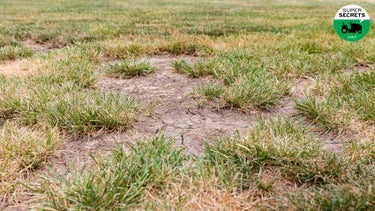Narin An made four straight birdies around the turn and finished with an 8-under 64 Thursday for a one-shot lead in the CME Group Tour Championship.
What’s a sneaky way to trash a golf course? A superintendent tees off

Golf tees are handy gizmos. They’re also a headache for superintendents, who are left to clean up the pegs that golfers leave behind.
The post What’s a sneaky way to trash a golf course? A superintendent tees off appeared first on Golf.
Golf tees are handy gizmos. They’re also a headache for superintendents, who are left to clean up the pegs that golfers leave behind.
The post What’s a sneaky way to trash a golf course? A superintendent tees off appeared first on Golf.
Consider the golf tee: handy gizmo for millions of golfers, and frequent headache for guys like Matt Guilfoil, the superintendent at Desert Canyon Golf Club, in Fountain Hills, Ariz.
Like all greenskeepers, Guilfoil deals routinely with stuff that golfers leave behind. Pitch marks and divots. Tire tracks and trash, including tees, broken and whole.
As the opinionated co-host of From the Jingweeds, a podcast devoted to the turf-care trade, Guilfoil is inclined toward sounding off on all kinds of workplace irritants, discarded tees among them. Here’s why they bug him, and what the rest of us can do to put him at ease.
1. They’re unsightly
On a busy day at Desert Canyon, golfers will tee up balls roughly 225 times. “If you figure half of them leave leave a tee behind — and that’s being generous — you can do the numbers,” Guilfoil says. Some of those tees are broken. Some are whole. Whether scattered on the tee box, or tossed into the surrounding trees or native grasses, they add up to a lot of shrapnel. Make that litter, in Guilfoil’s eyes. “That tee is no different than that Snickers wrapper you were too lazy to throw in the trash,” he says.
2. They do damage
Mowers are designed to cut grass, not tees. And while some tees are softer than others, all are capable of causing nicks and dings, or knocking mower blades out of alignment. As if maintenance costs weren’t already high enough.
3. They take time and labor
Cutting cups. Raking bunkers. Cleaning ball washers. To the lengthy list of daily maintenance tasks, add “cleaning up tees.” It requires a human being, who commands a salary and who could be more productive doing something else. At some courses, Guilfoil says, workers suck up tees with the same handheld vacuums they use for leaves. But in Guilfoil’s experience, tees get caught in the propellers of those machines. At Desert Canyon, his staff bites the bullet and does the time-consuming work by hand.
4. Mind the plastic
Of all the pegs golfers leave behind, the plastic ones bug Guilfoil the most, because they’re hard on mowers and “they never biodegrade.” And don’t even get him started on gimmicky designs. Why anyone would pay extra for a plastic tee shaped like a martini glass or a bikini-clad woman is beyond him. Same goes for plastic tees that promise greater accuracy or distance. (“Here’s my promise,” he says. “You’re going to be just as bad no matter what tee you use”). From where he sits, biodegradable tees, made of everything from wheat and corn to gelatin, are better, “but some of them are just as hard as plastic.” If Guilfoil had his druthers, more golfers would use wooden tees, because they’re softer on his machines, “and if you’re looking to channel your inner-hippie, you know that at some point they’re at least going to go back to the earth from which they came.”
5. Pick it up, or put it away
Just as you wouldn’t leave an empty beer can on the tee box (wait, maybe you would), you shouldn’t leave a tee in the ground, either. Guilfoil knows it sounds like a Herculean effort, but “bend over and pick it up.” While you’re down there, pick up an extra, just as you’d repair an extra pitch mark on the green. You can stash it in your pocket or your golf bag, or look for a receptacle in which to place it. Some courses put cups or open-topped crates on tee boxes for that purpose. Though you won’t find them at Desert Canyon. “It’s just another something else to clutter up the course,” Guilfoil says.
6. Recycle, reuse
Before you grab a fresh tee from your bag or pocket, look around. Odds are there’s an old tee on the box, ready for re-use. If you’re hitting iron or hybrid, a broken tee will probably do just fine.
7. Be like Laura
The first patent for a golf tee in this country was issued on Dec. 12, 1899, to a dentist (and golf addict) named George Grant. Before that, according to historians at the USGA Golf Museum, “courses would supply each hole with boxes of wet sand,” which golfers would pile into a makeshift tee, using either their hands or a cone-shaped mold. That sounds like a lot of work. As a comprise, Guilfoil suggests “the Laura Davies method,” referring to the LPGA great and World Golf Hall of Famer, who would taps the ground with her wedge to bring up a tuft of turf on which she props her ball.
The post What’s a sneaky way to trash a golf course? A superintendent tees off appeared first on Golf.

